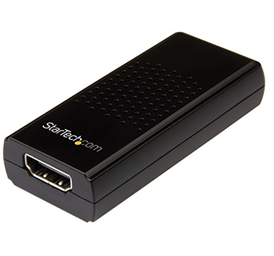Jason AlexisDigital Strategist for PastorsLine and co-author of reTHINK.Ministry. WHY ENGAGE IN MARKETING?Churches have so much to offer the people of this world. You have been given a mission by Christ to spread the Gospel message to everyone. Deliberate and intentional marketing is an important way to connect with people and share your message with them. Developing church online is an effective way to reach the new digital mission field. WHAT IS EXTERNAL MARKETING?This is how you communicate with the public. You’ll share why your church exists and tell them why they should care about your organization. Here are some ways to engage in marketing and outreach:
The strategic use of these tools will help you to effectively create a church online. Visitors from around the corner or around the globe will be able to connect with your congregation and have an experience of your vision and values. By bringing together all the digital communications tools, you create a 24/7 online experience of your church that begins by attracting people to a live streaming service and encourages them to follow your church throughout the week via automated digital tools and social media that personalize the online experience. WHO MANAGES EXTERNAL MARKETING?Outreach and evangelism are mission-critical to every church and ministry. Senior church leadership should be involved in the planning and development of a marketing strategy. The execution of this strategy will fall to the same person in charge of internal communications. There may also be a marketing team made up of paid staff , volunteers, and outsourced freelancers. WHERE IS THE FOCUS FOR EXTERNAL MARKETING?Marketing is directed at the larger public in your community. You can focus on the local neighborhood around your church, but a digital strategy can also give you a global focus. You can spread your message to people online around the world. Marketing will be deployed on many communications channels. These include your website, social media, mobile devices, and other online media tools. HOW TO IMPLEMENT EXTERNAL MARKETING
WHEN TO IMPLEMENT EXTERNAL MARKETINGThis is another activity that comes at the end of the development process. In order to engage in external marketing, you need to have a well-developed brand and clear goals that you want to achieve. You also need to have a strategy developed to achieve these goals. Without these, attempts to market your church may be premature. Learn about strategic branding for churches>> ADDITIONAL RESOURCES:
Posted with permission from the book reTHINK.Ministry. Dustin CommDirector of Media & Marketing for Good To Go Media. With Facebook’s organic reach for Pages declining, organizations are finding new ways to increase how many people see their posts that just aren’t showing up in the News Feed anymore. Some companies have started equipping their employees to share company news and content on their personal social media accounts in a way that includes them in the social media strategy. Called “employee advocacy,” it provides a simple mechanism for employees to choose from a variety of pre-selected posts, including text, and post to their own social media accounts. Companies are seeing much higher total click-rates when the content is coming from their employee’s personal profiles instead of the company accounts. Imagine assembling 25 of your church’s most active social media members onto a Member Advocate team and giving them a pool of content to pull from every week. Not only do they get to choose which content they share, but can also suggest new material and truly take ownership of the church’s brand. They can share events your church is promoting, a link to your website, a video your produced, or anything else you’d like to promote. The only difference is it’s not just coming from one account, but many, which ranks that content higher in Facebook’s algorithm. There are a number of services out there that streamline this process for a fee: Hootsuite offers it’s platform Amplify, SproutSocial has Bambu, and Oktopost and DrumUp are stand-alone solutions. These all make social sharing super-easy for your advocates (members can even schedule their posts for the week) and provide the data on how big your team’s impact was, but come at a price. However, Member Advocacy is also as easy as sending out an email once a week with links to the content and text. Your advocates simply copy/paste and they’re done. The hard part is getting people to actually post, which is why it’s a good idea to run a gift card contest every month to see who has shared the most. Make sure to include the leaderboard in each week’s content email. So if your church has no Member Advocacy (aka Digital Discipleship or Social Media Ambassadors) program in place, give it a try. It is so fun to see people getting engaged and taking ownership of the church’s story. And naturally more people will know what is happening in church life since they’re out there promoting it. It’s a win all the way around! RELATED CONTENT & RESOURCES:Akande DavisDigital Strategy Specialist and founder of Digital Pew. Livestreaming is one of the most powerful tools that you can leverage for your organization's digital marketing strategy and approach. Engaging with your audience in real-time and providing them unique experience comes second to none with most content experiences. In the world of content marketing, livestreaming is quickly becoming one of the most common and powerful tools for organizations. As powerful as it is, if done incorrectly, it can yield weak results or even hurt your brand! One of the most common shortcomings of livestream content is the quality of the actual livestream. If you're looking to engage with your audience effectively and produce content that is Evergreen in nature, the quality of the livestream is vitally important. After talking with several leaders involved in their organization's marketing and content strategy efforts, livestreaming can seem expensive and daunting. The truth is, it doesn't have to be. You can get a livestream that looks like a million dollars on a tight budget. In this article I'll cover 3 different ways that you can take your livestream to the next level. Mevo by Livestream: $299.99 - $399.99Mevo is likely the simplest and most effective way to give your livestream incredible quality without breaking the bank. Mevo is a complete livestreaming solution that allows you to setup and shoot wherever you are with great quality. They have a huge community of people that are willing and able to help, a dedicated support staff and a large user-base which is always a huge plus; big userbases typically means that new features and software will be considered with each release more often. Here are some of the most notable features that places it at the top of my list:
The next option has a drop in quality, but also a big drop in price and setup time, which is why I ALSO recommend the... Logitech C922x Webcam - $99.99The Logitech C922x webcam is a great, simple and cheap solution for livestreaming with really good quality. There are a few limitations, such as needing a laptop or computer to stream from and also lacking the ability to do multiple edits/cuts, but for the price-point, it is a great alternative. The Logitech C922x also comes with a ton of accessories such as tripods, desk clamps, and other accessories to bring your livestream to the next level. The Logitech C922x has a few standout features:
If you're looking to get your feet wet with livestreaming without it costing an arm and a leg, this is the option for you. Even with some of the drawbacks, it is still one way to get a great looking video. If you are looking to supplement this option to get better sound or visuals, consider getting some simple lights or even an external microphone that you can use via USB to help enhance the quality. They are small changes that you can make right away to notch up your livestream. This last option is for tech savvy people, but is still a great choice. StarTech.com USB Video Capture Device - $129.99The StarTech USB Video Capture Device is the only option listed in this blog that does not include a video camera option. Even though this option for livestreaming doesn't have a camera included, the potential is huge and here is why... With StarTech's equipment, you can use any camera that you already have, that has an HDMI output, to do a livestream. That means equipment that your organization already owns or uses, can be used for DSLR/video camera quality livestreams and audio! This device can be used for DSLRs, camcorders, and anything else that has an HDMI out, including a video game console (if that's your niche). When you have that sort of flexibility, you can begin to create livestreaming content that excels in visual and audio quality. You could potentially have the best looking livestream using this method, but it might take some time to setup. There are also a lot more considerations with this setup; how you setup your camera, lenses, audio and subject will all be much more important to maximize the value and quality. Creating great content doesn't have to be hard or break the bank. Find an option that works for you and start using livestreams to engage your audience TODAY! Reposted with permission from DigitalPew. Related Resources:Jason AlexisDigital Strategist for PastorsLine and co-author of reTHINK.Ministry. THE IMPORTANCE OF INTERNAL COMMUNICATIONChurches are communities of people, so good lines of communications are necessary in order to work most effectively together. Thriving organizations have excellent internal communication systems in place. These systems help leaders cast visions and set goals. They help organize the congregation to achieve these goals. Solid communications help members feel connected and involved with your church. An effective internal communications system creates a dialogue that is clear and healthy between your congregation and the church leaders. You cannot begin to reach out and attract new people to your church community if you don't have a solid internal communications system. Otherwise, when new people come, they may not experience a warm welcome. Instead, they may feel left out of the loop, confused, and frustrated about how to fit in with your church. In short, good communications effectively integrate new people into your church community. WHAT IS AN INTERNAL COMMUNICATIONS SYSTEM?Your internal communications system is composed of all the channels that you use to communicate with the members of your congregation. In the past, communication was simple. Church bulletins, pulpit announcements, and phone calls made sure that everyone knew what was going on. Today, communication is more complex. People are busy, and they don't always read the bulletin or attend weekly planning meetings. If you want to keep your entire congregation in the loop, you are going to have to communicate across more channels. Email, social media, text messaging, and possibly mobile apps will all be important components of your internal communications system. In other words, your internal communications system is going to have an external layer. The phrase used to describe this is 'church online.' This means that your online presence will replicate the experience of participating in your live congregation. It will be a fully interactive experience that your members and visitors can engage in beyond weekend services and live events. An effective, online, church experience is created from strategically using all the digital and mobile communication channels at your disposal. WHERE IS THE FOCUS OF INTERNAL COMMUNICATIONS?Internal communications is a church-wide effort to dialogue with church staff and members of the congregation. It covers all the communications channels and includes the software and hardware that allows your church to engage in a dialogue with its loyal visitors and members while laying the foundation to interact with the outside world. WHO HAS RESPONSIBILITY FOR INTERNAL COMMUNICATIONS?For many churches, no one has ownership over the communication channels. Secretaries produce the bulletins, volunteers run the website and social media, and others manage the email. In order to bring all your communications together in a strategic way, someone has to take leadership. It will be very helpful for your church to designate a Communication Director / Manager. Some churches may be able to hire someone to fill this position. Others may simply give these responsibilities to someone already on the pastoral team or a committed volunteer. This person will manage a team of people to execute an overall digital communications strategy. After planning, the Communication Director / Manager works very closely with the pastoral team to ensure that the digital strategy synergizes with the overall pastoral plan for the year. To be most effective, internal communications needs to work closely with external marketing (next chapter). As a result, the communication director (or communication manager) will be interfacing with both systems. It is recommended to select a lead person who is capable of seeing the overall picture and how each aspect of the strategy plays its part. The target audience for your internal communications is going to be both members and visitors. You will need to focus on these two groups and their needs. You will also want to prioritize the training of members to interact effectively with visitors. HOW TO DESIGN AN INTERNAL COMMUNICATION STRATEGYWith so many potential communication channels out there, you might be wondering where to start. The best way is to survey your congregation. You want to find out what communications channels they have available to them. Setting up a Twitter account is not going to help you if the members of your congregation do not use Twitter. Once you have good data on the preferred communications channels of your congregation, you can begin to make decisions about how to design your own internal communications system. Armed with this knowledge about your congregation, you can begin to look at the kinds of messages you want to communicate to your congregation and outline a content strategy. Then proceed with the following steps:
Before you tackle the steps above, be sure to define your brand and develop your overall communications strategy. In reality, you are already communicating with your congregation in some way. Most congregations use pulpit announcements and bulletins. Many have websites with online sermons. Some churches may also use email and social media. So, this part of the digital strategy process involves taking stock of what you are already doing and aligning it with the vision and goals that you have developed. Once you do this, you can add new components to your internal communications system to help you to achieve your goals. Posted with permission from the book reTHINK.Ministry. RELATED RESOURCES: |
Archives
August 2020
Categories
All
|
- Home
- BLOG
-
RESOURCES
-
RESOURCE MENU
>
- ADVENTIST IDENTITY GUIDELINES
- BIG DATA RESOURCES
- BRANDING, IMAGE & DESIGN RESOURCES
- CHURCH/MINISTRY SPECIFIC RESOURCES
- COPYRIGHT & TRADEMARK BASICS
- COURSES
- EMAIL RESOURCES
- GUIDANCE FOR HIRING SOCIAL MEDIA POSITIONS
- PODCASTS
- REPORTS & CASE STUDIES
- SOCIAL MEDIA RESOURCES
- (SOCIAL) VIDEO RESOURCES >
- TEXTING 4 CHURCHES
- TRACKING & ANALTYICS
- WATCH VIDEOS & TUTORIALS
- WEBSITE TIPS
- SOCIAL MEDIA GUIDELINES
-
RESOURCE MENU
>
- SEO
- Digital Discipleship & Evangelism
- COVID-19 RESOURCES
- eNEWSLETTER








 RSS Feed
RSS Feed